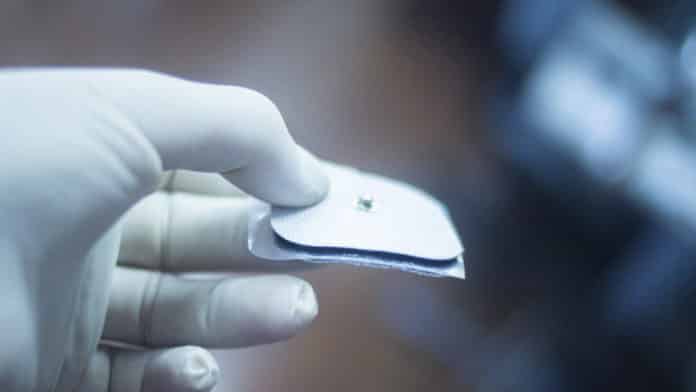Needle-Free Flu Vaccine
Researchers from the University of Rochester have discovered needle-free flu vaccines which is more effective than the traditional flu shots.
Though the research is in the early stages, it is an essential step toward a technology that could replace needle-based vaccination methods.
Benjamin L. Miller, Ph.D. and corresponding author of the paper says that Scientists have been studying needle-free vaccine approaches for few decades though none of them have managed to live up to the benchmark of the traditional vaccines.
He added that this study is different from others be
cause of the efficacy and lack of toxicity. The prospect of the product could have enormous implications for global health.Needle-Free Flu Vaccine- The Idea
The transport of big molecules like flu vaccine proteins across the skin is difficult to do, as the skin is intended to keep things out of the body, not to let them in. The team of scientists took lessons learned from the research and treatment of prevalent inflammatory skin disease to overcome this hurdle.
In patients with atopic dermatitis or eczema, the skin barrier is leaky. This allows pollens, molds, and a host of other allergens to enter through the skin and be sensed by the immune system. Lisa A. Beck, M.D., author and Professor of Dermatology at the University of Rochester Medical Center found that the expression of a protein called claudin-1 helps maintain barrier strength and lessen the permeability of the skin. Claudin-1 is significantly reduced in eczema patients compared to individuals without the disease.
Beck and team wondered if they could use this induced permeability to get a flu vaccine virus through the skin. The key would be to disrupt the skin barrier long enough to deliver the virus, but not so long to let unwanted things in.
Needle-Free Flu Vaccine- How It Works?
Miller, a chemist, worked with first author Matthew Brewer, Ph.D., who is an immunologist. They worked to develop synthetic peptides that bind to and inhibit claudin-1 to open up the skin barrier. The group tested their formulations in human skin cells and identified a peptide that disrupted the wall without any toxic effects.
In the next step, they designed a patch containing the synthetic peptide and a recombinant flu vaccine and tested two scenarios.
In the first scenario, researchers placed the patch on mice to prime the immune system and subsequently administrated an intramuscular flu shot to boost immunity.
In the second scenario, they did the opposite. They delivered an intramuscular flu shot first to prime the immune system followed by the patch to boost immunity.
In both scenarios, they placed the flu vaccine patch. This looks like a tiny piece of tape, on the backs of mice. They left it for a period of 18-36 hrs. The spot effectively opened up the skin barrier, as measured by water loss through the skin.
When the patch was placed first, there wasn’t a significant immune response. This suggests that it might not be effective at taking a flu naïve infant who hasn’t received a flu shot or been exposed to the virus to adequate protection.
The researchers found that it did initiate a robust immune response when it followed the intramuscular shot. This suggests that it could boost preexisting immunity for anyone six months or older who has been vaccinated or exposed to the virus.
Most Importantly, the team saw no physical changes in the skin over the three months the mice were observed, meaning that the brief barrier disruption didn’t increase the risk of infection.
Needle-Free Flu Vaccine- Improved Global Healthcare
Needle-based vaccines are undoubtedly effective but require medical personnel to deliver, generate biohazards (sharps) requiring disposal, and cause anxiety in patients. This is a massive barrier in developing countries.
A flu vaccine patch could provide a non-invasive way to administer vaccines quickly and economical to large numbers of people across the world.
These countries don’t have the workforce to vaccinate entire populations added Beck. A needle is painful and invasive. It makes things more difficult when you are dealing with a cultural bias against preventative medicine.
Needle-Free Flu Vaccine- What’s Next?
Researchers say that there’s a lot more work to be done on the flu vaccine patch. This includes additional animal studies to help the team optimize the amount of time the piece must remain on the skin to appropriately boost the immune response. The team hopes to conduct human clinical trials in the future and believes that if the patch is effective in people, it could work for diseases for which there’s already a needle-based vaccine.






























